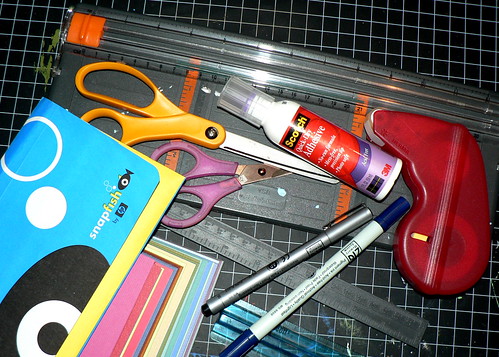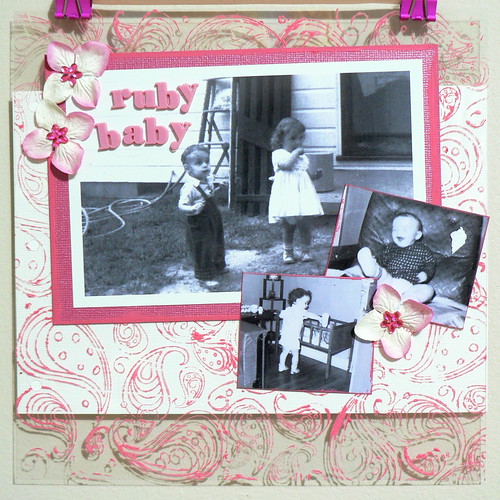
This is another page for my mom's biography book. This page is about her father, Roy Albea. It's very simple, with the title coming from the pattern paper. It's a simple layout, using layered papers and no embellishments. I even created the pattern paper that's directly under the photo. I used a Hero Arts stamp, along with their 'soft pool' ink, to create paper to go with the layout.








